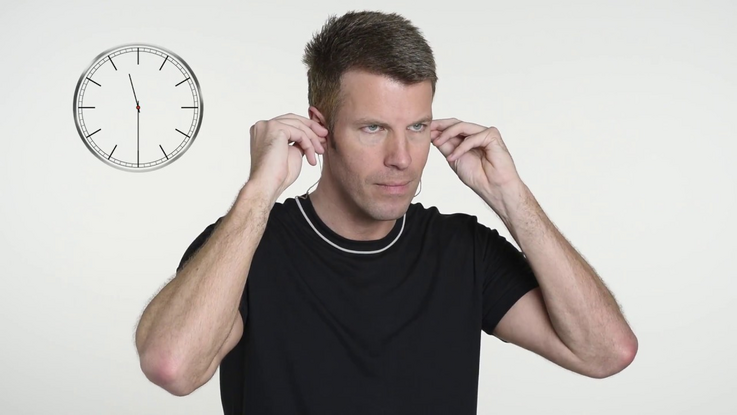Noise Induced Hearing Loss (NIHL)

What is NIHL?
Tiny hair cells (or stereocilia) in our ears absorb vibrations and interpret the sounds around us. Short intense bursts of noise or exposure to loud noises for prolonged periods cause damage to these hair cells.
Noise-Induced Hearing Loss (NIHL) is a permanent hearing impairment resulting from exposure to noise levels above the noise-rating limit (85dB averaged over 8 hours).
If exposed to high noise levels WITHOUT hearing protection, we are likely to lose part, or in the worst-case scenario all of our hearing. NIHL is the most common occupational injury in the world.

What can I do?
Once damaged, our hair cells are not replaceable and do not regrow. This means that NIHL is a permanent and irreversible impairment. The good news is that it is relatively easy to prevent BUT we need to be proactive and take action NOW.
By wearing the appropriate hearing protection device and wearing it CORRECTLY, we can beat noise-induced hearing loss. Click here to view uvex hearing protection products.
As simple as this seems, millions of people around the world are still affected by NIHL. Why is this? At uvex we believe that this is due to a lack of knowledge and access to training for those exposed to high noise levels. This is why the local Occupational Health and Safety Act (Act no. 85 of 1993) and the Noise-Induced Hearing Loss Regulations instruct employers to offer annual hearing conservation refresher training to their employees.
FREE OHS Compliant Hearing Conservation Training
uvex safety is all about protecting people and has consulted with occupational hygienists, audiologists and local South African government to create a free online eLearning hearing conservation training module for all customers to protect their employees, achieve training compliance on record, and ultimately prevent NIHL injuries in their organisation.
The training content is local, covers all criteria stipulated by the OHS Act (85 of 1993), NIHL regulations and produces individual certificates per employee by Name, Surname, Company Name and Identity Number upon completion. The training takes approx. 25min to complete and should be retaken annually by all employees exposed to high noise levels as determined by your noise assessment. The training is completely free to all uvex safety hearing protection customers. All you need to do is register and a link will be emailed to you with access to the eLearning Module.
How do I select the correct hearing protection device (HPD):
The short answer:
Ave Noise Level (dB) – SNR Value (dB) = must equal between 70dB – 80dB
Noise levels in the workplace must be measured first to determine what level of protection is required. The health and safety professional or external qualified service provider should conduct the assessment using approved test equipment. The continuous noise level and if necessary, the peak emission noise level is measured, enabling a noise profile to be recorded. Appropriate hearing protection can then be selected using the SNR calculation method above (in accordance with: Directive 2003/10/EG "Noise" [8] And 2002/44/EG "Vibrations" Of The European Parliament And Of The Council).
80dB(A): Hearing protection must be provided for employees (use is optional).
85dB(A): Provision and use of hearing protection is mandatory.
The objective when choosing suitable hearing protection is to achieve an effective residual noise level of between 70dB and 80dB for the wearer. If the protection is too high (over protection), this can result in the inability to communicate and hear warning signals.
Example: Noise level 100dB – uvex whisper reusable earplug SNR 23dB = 77dB. Perfect!
Typical noise levels (dB) produced by everyday objects:

Register here for free hearing conservation training for all employees in your organisation
"Education is the most powerful weapon which you can use to change the world." - Nelson Mandela -
Our interactive hearing wheel helps you find the right hearing protection in relation to the noise level of your working place. Try it here
Hearing wheel earplugs
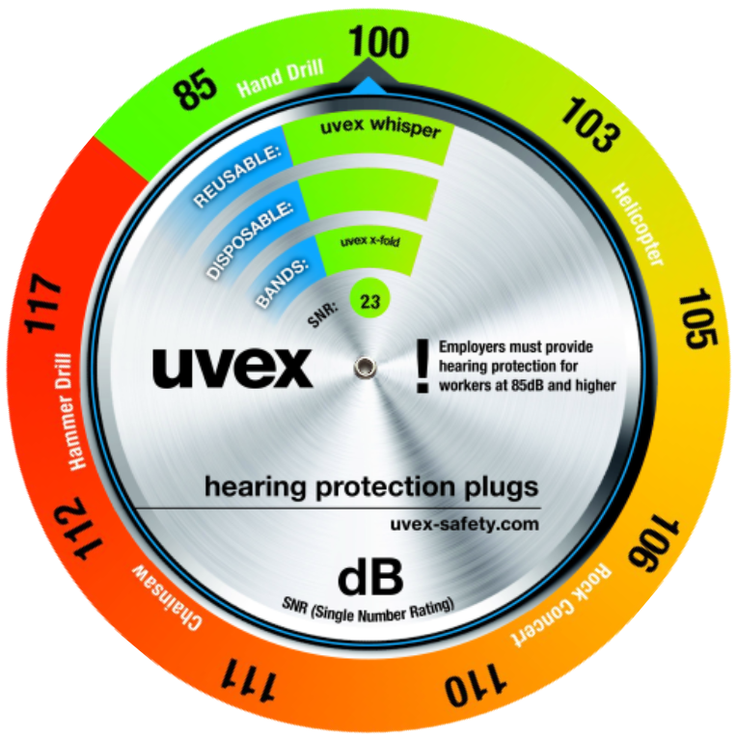
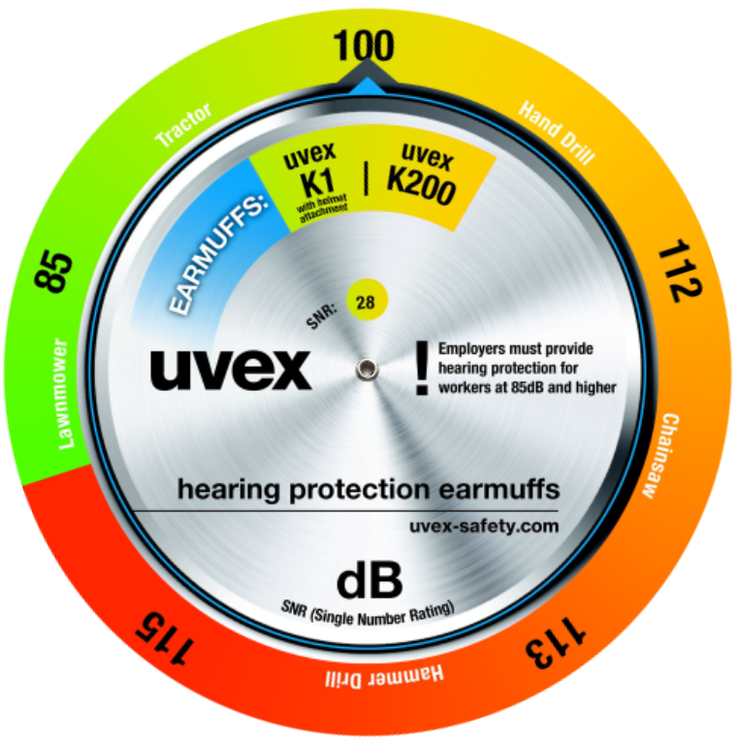
Hearing wheel earmuffs
Handling hearing protection plugs
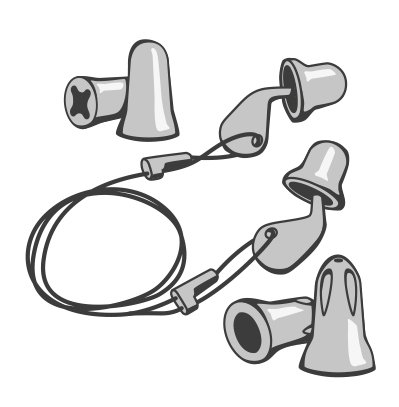
disposable hearing protection plugs
Outstanding safety for one-time use: uvex disposable hearing protection plugs offer excellent wearer comfort when worn for long periods.
reusable ear plugs
Readily available and easy to clean: uvex reusable ear plugs with hygiene boxare reliable companions for your everyday work.
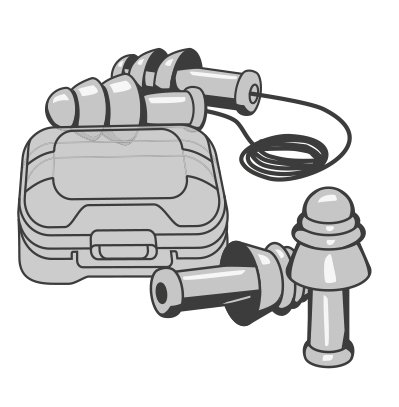
To guarantee optimum hearing protection, uvex disposable hearing protection plugs must be used correctly.
disposable hearing protection plugs

(1) Briefly roll down uvex disposable hearing protection plugs.
(2) Put your arm over your head and move the ear slightly upwards to straighten your auditory canal. This achieves a better fit.
(3) Insert plugs and hold in place while they expand. If they are not visible from the front, then they are in the right position.
reusable ear plugs
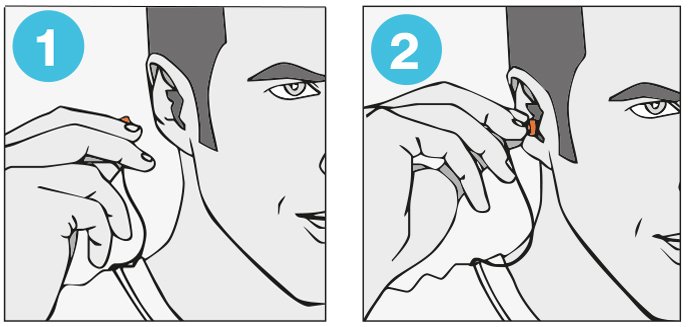
(1) Take uvex reusable ear plugs by the handles and place the cord around your neck.
(2) Insert uvex ear plugs into the auditory canal, applying gentle pressure.
In dirty working environments, particles can easily stick to the surface of materials and cause minor injuries in the ears.
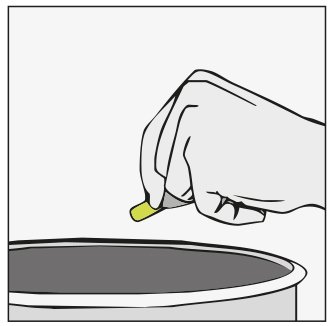
disposable hearing protection plugs
Please dispose of uvex disposable hearing protection plugs after each use.
reusable ear plugs

(1) Easy to clean with uvex damp cleaning cloth.
(2) Alternatively, clean them with water and mild soap.
(3) Dry them and store in the uvex hygiene box when not in use.
disposable hearing protection plugs

reusable ear plugs
